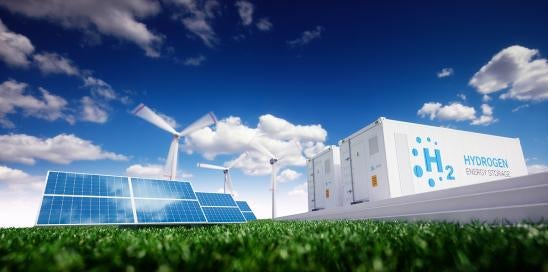There is a lot of buzz around clean technology, distributed energy resources (DERs), microgrids, and other technological innovations in the renewable energy and clean transport industries and how these developments can contribute to solving longstanding environmental justice issues. As these innovations develop, energy markets will undergo substantial changes to which consumers and industry participants alike will need to adapt and leverage. Every other week, K&L Gates’ The Energizer will highlight emerging issues or stories relating to the use of DERs, energy storage, emerging technologies, hydrogen, and other innovations driving the energy industry forward.
Bloom Energy to Produce Hydrogen at Prairie Island Nuclear Plant
-
On 19 September 2022, Bloom Energy unveiled its plans to use energy generated by Xcel Energy‘s Prairie Island Nuclear Generating Plant to create carbon-free hydrogen via electrolysis. Bloom Energy plans to install a solid oxide platform electrolyzer at the Prairie Island Plant to convert water to hydrogen at high temperatures. The plant is located in Welch, Minnesota.
-
Bloom Energy chose to site the electrolyzer at the Prairie Island Plant to leverage the high heat and steam produced at the Xcel plant. The electrolyzer to be installed will differ from other hydrogen electrolyzer models in that it is designed to convert water to hydrogen at much higher temperatures. Converting water to hydrogen at higher temperatures is more efficient and requires approximately 40% less electricity.
-
Using hydrogen as an alternative, carbon-free fuel source is seen by many as a viable way to transition to a zero carbon emission future. One of the challenges posed in creating hydrogen through electrolysis of water is the cost of the required electricity. Technologies and strategies that lower the cost and energy inputs involved in producing hydrogen through electrolysis will be important in leveraging hydrogen as an alternative fuel source.
Department of Energy Announces US$60 Million Funding Opportunity For Hydrogen Technologies and Grid Decarbonization Research
-
On 23 August 2022, the U.S. Department of Energy’s Office of Energy Efficiency and Renewable Energy (DOE) issued a US$60 million Funding Opportunity Announcement (FOA) with two unique areas of interest to support the Biden Administration’s 2050 net-zero carbon economy goal: (1) Hydrogen and Fuel Cell Technologies in support of “Hydrogen Shot,” and (2) Improving Electricity Grid Resilience.
-
The first area of interest includes US$40 million in funding to advance the development of hydrogen and fuel cell technologies to support DOE’s “Hydrogen Shot” goal to reduce the cost of clean hydrogen to one dollar per kilogram in one decade.1 This area of interest invites project applications regarding four topics: (1) solar fuels from photoelectrochemical and solar thermochemical water splitting; (2) development and validation of sensor technology for monitoring and measuring hydrogen losses; (3) materials-based hydrogen-storage demonstrations; and (4) high performing, durable, and low-PGM catalysts/membrane electrode assemblies for medium- and heavy-duty applications. DOE envisions multiple financial assistance awards in the form of cooperative agreements with a period of performance spanning between two to four years.
-
The FOA’s second area of interest involves a US$20 million university research consortium to help states and Tribal communities successfully implement grid resilience programs and achieve decarbonization goals. The consortium will be organized in coordination with universities in Mexico and Canada and will aim to address cross-border grid dependencies and electrical interconnections throughout regions.
New York Governor Announces Distributed Energy Milestone
-
On 21 September 2022, Governor Kathy Hochul announced that the state of New York has successfully installed four gigawatts (GW) of distributed solar——enough to power more than 710,000 homes. The projects are spread across community, residential, small commercial, and industrial projects and are largely a result of New York’s NY-Sun Initiative, which provides incentives and financing for homes and businesses wishing to utilize distributed solar.
-
New York’s progress from three to four GW was the fastest gigawatt-to-gigawatt increase of state level distributed solar power to date, taking approximately one year to achieve. In part, this increase was due to the recent installation of 1,400 solar panels on the roof of the Javits Center, forming Manhattan’s largest single-rooftop solar array. This project was the result of a private partnership between the Javits Center, the New York Power Authority, and Siemens Industry, Inc. and is accompanied by a 3.5 megawatt battery storage system. It also serves as a habitat for area wildlife.
-
New York is on track to exceed its goal to install six GW of distributed solar by 2025 and progress toward 10 GW by 2030. In addition to the four GW of distributed solar already installed statewide, there is another 3.2 GW of solar, enough to power 560,000 homes, that have been awarded NY-Sun incentives and are now under development across the state.
FOOTNOTES
1 This opportunity will also support DOE’s H2@Scale initiative, which aims to advance the affordable production, transport, storage, and utilization of clean hydrogen to enable decarbonization and revenue opportunities across multiple sectors.





 i
i


